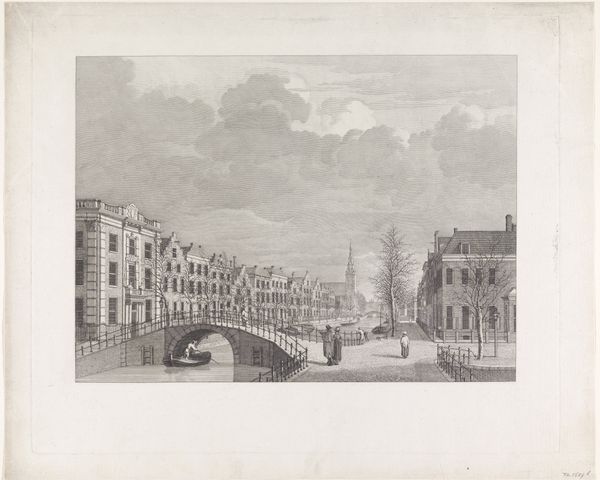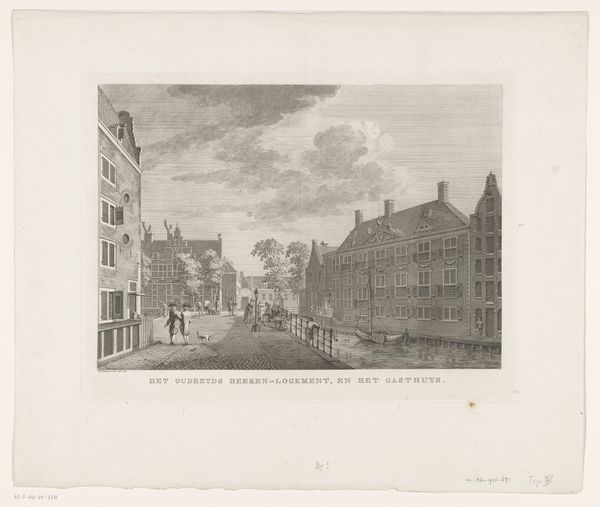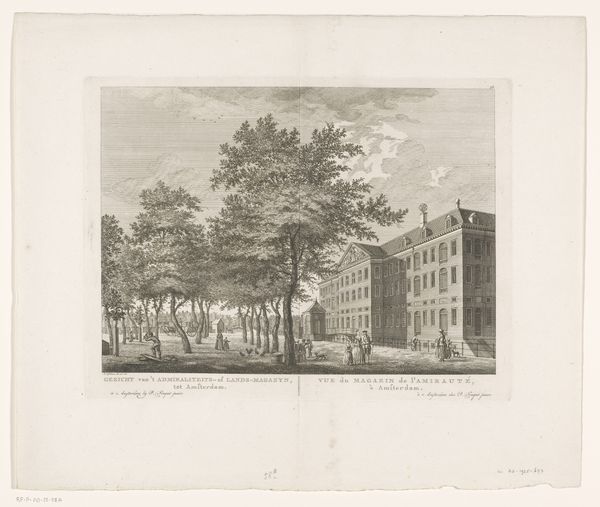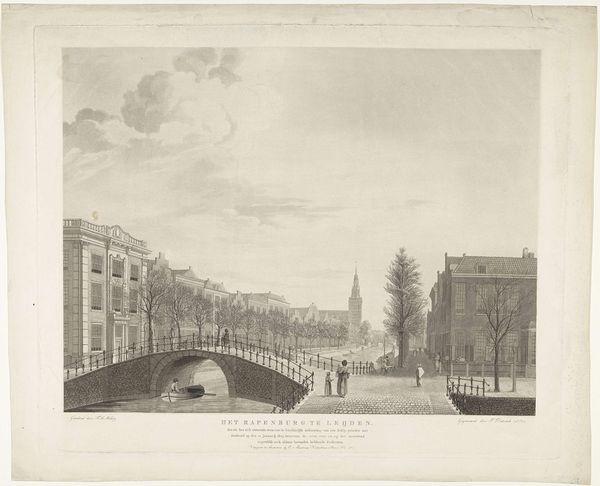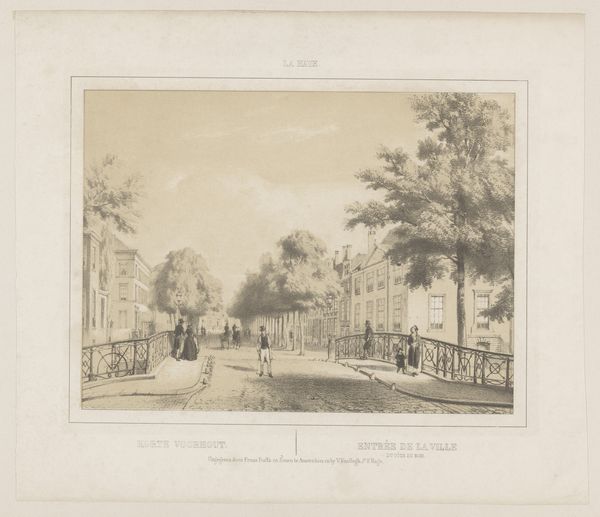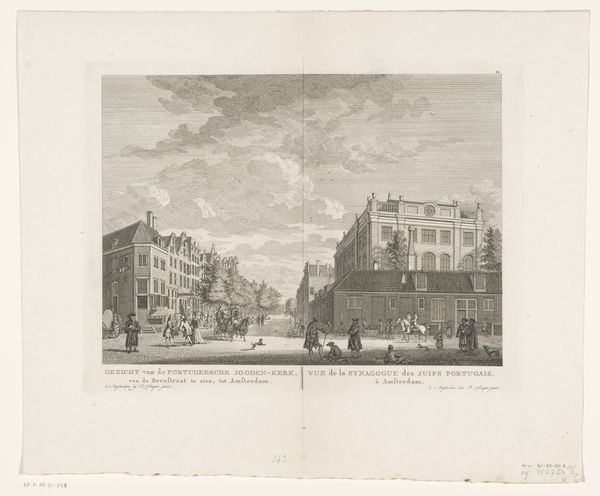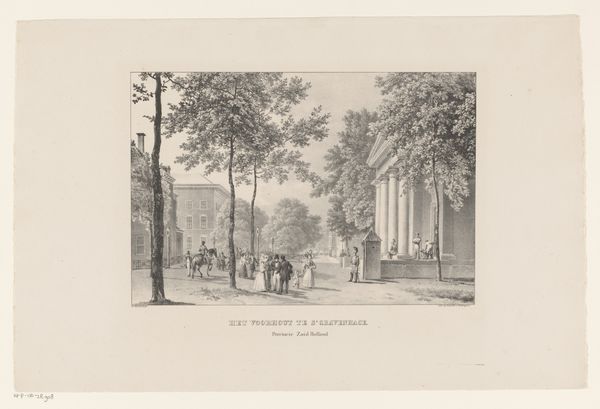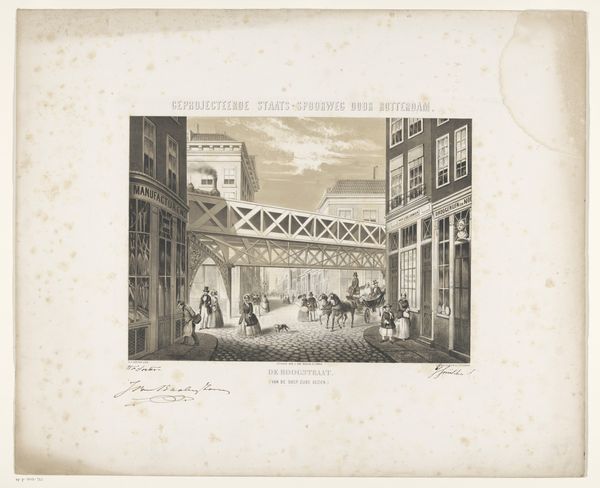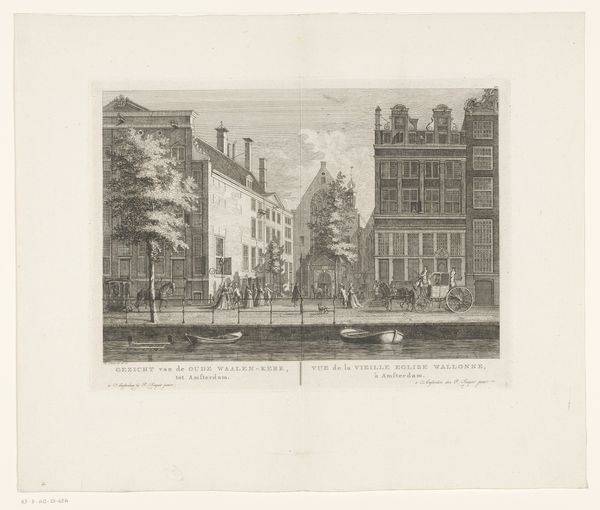
Dimensions: height 280 mm, width 357 mm
Copyright: Rijks Museum: Open Domain
Curator: Here we have "Gezicht op de Utrechtsepoort te Amsterdam," or "View of the Utrecht Gate in Amsterdam," an engraving created between 1764 and 1783. It resides here at the Rijksmuseum. What are your initial thoughts on it? Editor: There’s a remarkable sense of calm. The composition is meticulously ordered, with the architectural elements creating a very stable, almost theatrical stage for everyday life. Despite being monochrome, I'm struck by its atmosphere. Curator: It's interesting that you note the staged feel, given the socio-political context. The late 18th century in Amsterdam was marked by increasing tension between the Patriot movement, which sought democratic reforms, and the ruling oligarchy. Views such as this one are interesting examples of imagery which often deliberately avoids explicit political statements. The very conscious emphasis on orderly commerce and architecture is thought to present a comforting idea of Dutch life. Editor: Exactly, and that's where I find some of the tension. We have these neatly dressed figures performing everyday tasks, but they're framed by structures representing control. How accessible was this "comforting" vision to the everyday person? These images are distributed and controlled, after all, which means it reflects not necessarily life as lived, but life as consumed. The details like the strong verticals, framing, even the limited color create this ordered perspective you mentioned, and that creates a statement itself. Curator: Certainly. The engraver, Caspar Jacobsz Philips, very consciously adopts compositional devices prevalent at the time to subtly flatter the dominant powers, so he uses careful detailing. It shows Philips’ skilled use of line to create depth and texture and the architectural accuracy that speaks to the values placed on urban development. The print would've been sold as a souvenir or an object of civic pride, promoting a sense of unity and order. Editor: Yes, the order that is meant to inspire comfort perhaps, while simultaneously, subtly communicating that order must be maintained, through a carefully cultivated view. It serves as a poignant reminder to analyze what those in power choose to broadcast as 'normal'. I see not just a cityscape but a statement about control, class, and carefully curated ideals. Curator: An excellent point. It prompts us to think more critically about whose perspective is valued. Editor: Precisely, art holds many more voices.
Comments
No comments
Be the first to comment and join the conversation on the ultimate creative platform.
